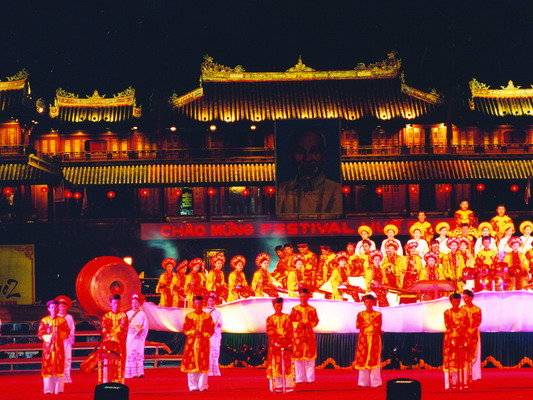The royal court music of Hue is a traditional form of music from the Nguyen Dynasty’s imperial court in Hue, embodying solemnity and majesty tied closely to royal ceremonies. Originating in the 15th century, it was performed at festivals, religious ceremonies, and diplomatic receptions, expressing reverence for ancestors and blessings for the nation.
In the grand setting of the Imperial City, Hue’s royal court music resonates with the harmonious and refined sounds of traditional instruments like the dan nguyet (moon lute), dan nhi (two-stringed fiddle), dan bau (monochord zither), flute, drums, and cymbals. The slow, dignified melodies combined with the elaborate costumes and graceful movements of the performers create an elegant, stylistic musical tableau.
In addition to being central to court rituals, royal court music also played a role in royal festivities. These performances embodied the unique culture of the royal court, always following traditional protocol. The performers, skilled in both instruments and vocal techniques, brought a dignified presence to each event. The lyrics and music were rich in poetry and closely tied to the daily life of the rural population, carrying lessons about humanity and the sense of responsibility.
Today, Hue’s royal court music is not only an artistic heritage but also a profound cultural symbol. Efforts to preserve this art form are ongoing, with the aim of helping future generations understand and cherish Vietnam’s cultural heritage. Performances, classes, and traditional ceremonies in Hue and beyond have contributed to the preservation and development of this legacy, keeping alive the spirit of a long-standing cultural tradition.

